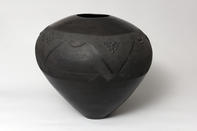In the past, skilled potters bartered their wares for chickens or grain, sometimes also exchanging pots for other locally manufactured items like grass mats and small pieces of beadwork.
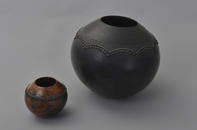
Following the emergence of a cash economy, they began to sell their pots at local markets, using the funds secured through sales to purchase building materials, dry goods from trading stores and sacrificial goats. In the course of the late 20th century, potters began to market their work to outside markets.
In KwaZulu-Natal several became increasingly well-known beyond their own communities. Some, like Nesta Nala, who initially made small, exquisitely delicate pots for the Vukani Centre in Eshowe, went on to attain international acclaim for their work. Others in Nala’s family, but especially her daughters, Zanele (who died in 2006), Thembi and Jabu Nala have all attained fame for their inventive, highly skilled work.
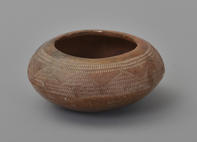
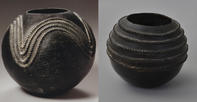
A member of the Ibandla lamaNazaretha, an independent church with headquarters at Inanda on the outskirts of Durban, unusually Ngema learnt pottery not only from her neighbours, but also at a Christian school she attended as a young girl.
She initially sold work at the Mona Market near Nongoma, but her pots have since been acquired internationally by both private collectors and public galleries and museums. Some of Ngema’s pots are decorated with smooth strips of clay, but in others, she impressed these ridges with a stick so that they end up looking like amasumpa motifs.
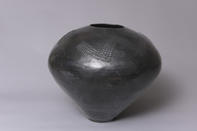
Thandiwe Mabhengu Magwaza is a member of a famous potter family from the umPhabalane district near Kranskop in present-day KwaZulu-Natal. She has become famous for producing pots decorated with a particular form of the amasumpa pattern known as qhumbuza.
To achieve this effect, potters use a small circular tool to push clay from the inner wall of the pot outwards. Magwaza uses this technique to form a variety of designs on the shoulders of her pots, including concentric circles, layered triangular projections ending in loops, and extended zigzags. Like the work of most of the other members of this extended family of potters, her vessels generally have wide shoulders, ending in a comparatively narrow base.
